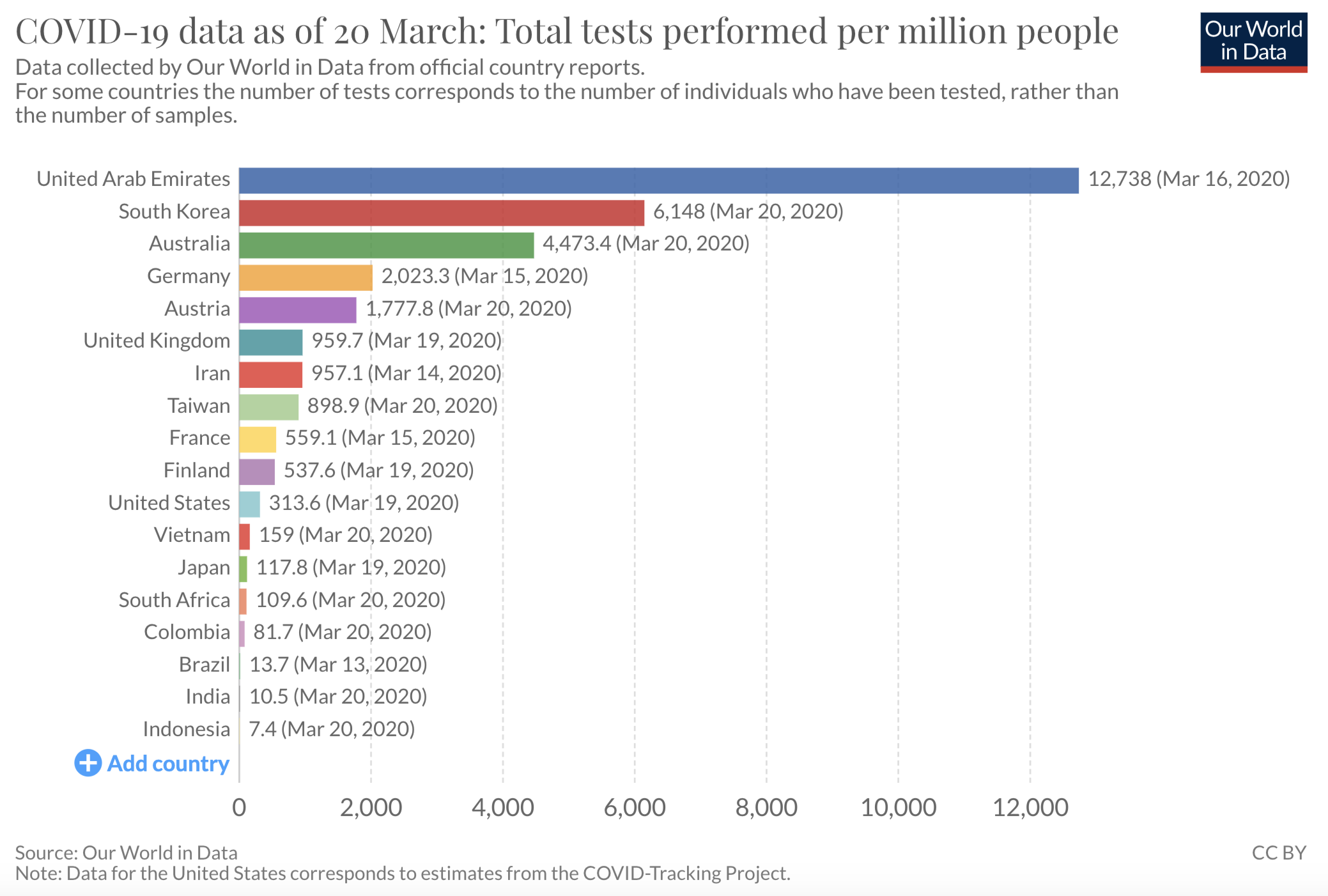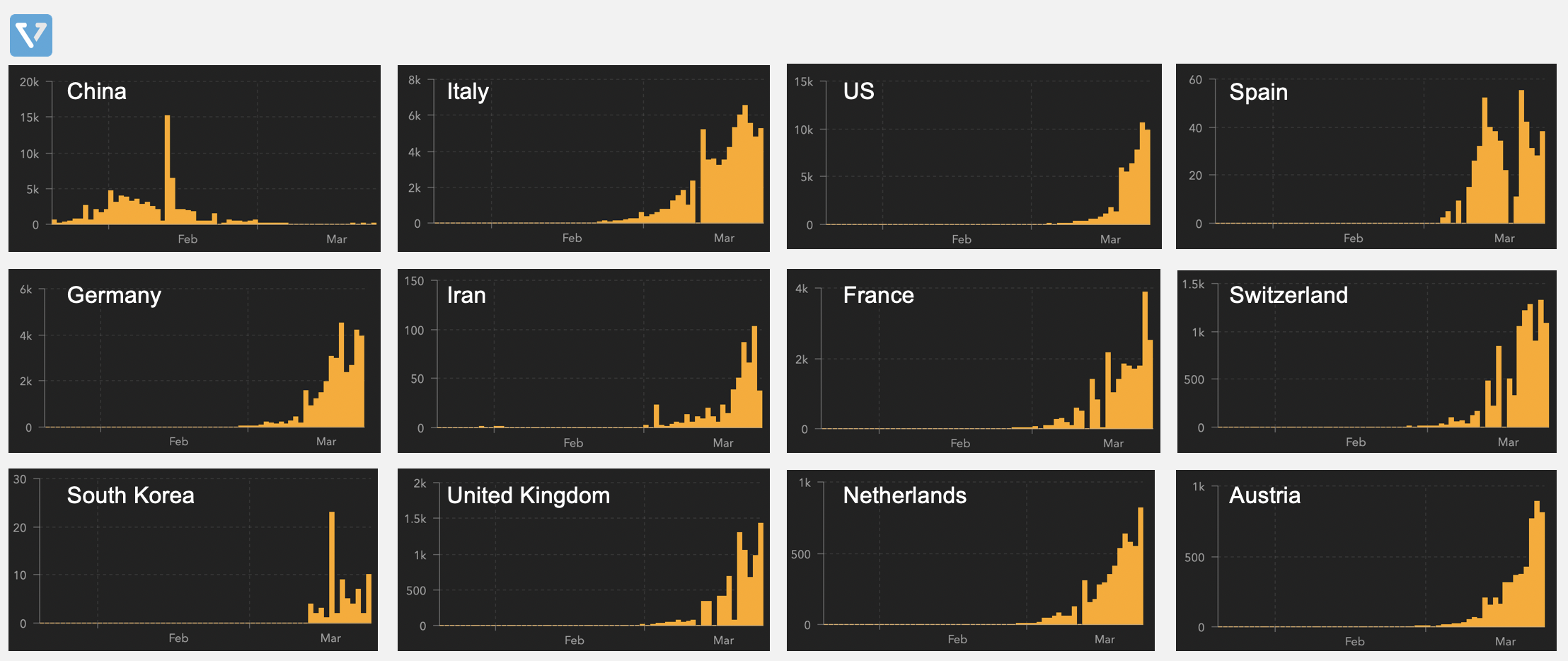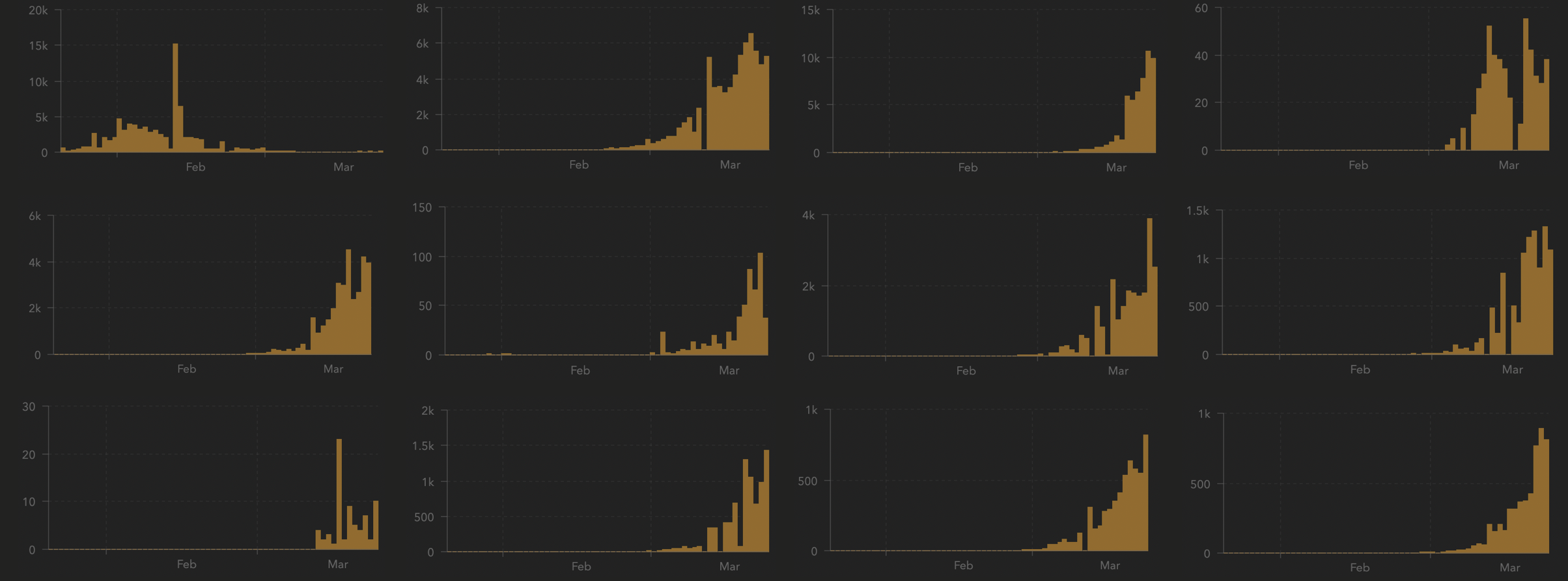The lockdown – slowing down the pandemic
As India enters its lockdown period, many of our readers might be wondering, for how long? What kind of impact will it have? Perhaps looking to other countries that have entered and are now leaving the lockdown period can be informative.
China’s approach
In mid-January, the Chinese government quarantined Wuhan (the city where the first cases of COVID-19 were recorded). The authorities did not stop there, however. They also quarantined 15 other cities in the Hubei province, suspending flights and trains, and blocking roads. Shortly after, the lockdown was expanded to other parts of China, affecting about 760 million people. This lockdown effort was then bolstered by aggressive testing. Even now, at the writing of this article (~2 months after it was first imposed), the lockdown is not fully lifted. Although the majority of the country is slowly returning to normalcy, the mandatory lockdown in Hubei was only to be lifted today, March 25th 2020 (2 months after it was implemented). Meanwhile, Wuhan, where the pandemic hit the hardest, is still under quarantine until April 8th.
This lockdown was extremely important in slowing down the spread of the pandemic as to not overwhelm the healthcare system. Two to three weeks after the lockdown was instituted, the number of new cases began to decrease rapidly. One study estimated that the measures imposed by the Chinese authorities reduced the number of cases by 67X (preventing the number of cases to balloon to nearly 8 million by end of February).
As the government is easing restrictions, it is to be seen whether there will be further outbreaks.
This lockdown comes with a hefty economic cost. Some analysts are estimating that China’s economy could shrink by 10%. The blow comes in two phases. Phase 1 was due to halted economic activities as a result of the lockdown, and as activities are slowly returning to normal levels, China is hit by Phase 2 – global economic slowdown due to the lockdown happening in the US and the rest of the world. The Phase 2 blow will be especially painful for China, as its economy relies heavily on exports.
South Korea’s different approach
Unlike China, South Korea never imposed a full nationwide lockdown. Instead, the country has implemented a systematic and aggressive testing program, testing anyone who has been in contact with confirmed cases. The government even goes far as to use electronic surveillance: camera footage, mobile phone tracking, GPS data and credit card activities. The goal is once a confirmed case is identified, authorities are able to trace back and place everyone who has been in contact with the patient into quarantine. This detailed tracking also allows the government to inform local citizens that might come in contact to impose self quarantine. Whenever new cases are discovered, citizens living in the same district will receive an emergency alert. There are even websites and apps that detail the hour by hour timelines of infected people’s travel (bus routes they took, whether they were wearing masks, etc). These efforts enable a more surgical and precise quarantine effort (as opposed to a wide lockdown).
Despite the fact that the US and South Korea detected their first case of COVID-19 on the same day, the aggressiveness of testing that followed was very different. As of March 20th 2020, the US has tested only about 313 per 1 million people, almost 20X less than South Korea (see Figure 1).

Figure 1: number of tests conducted per million people. Data was last updated on March 20th 2020, taken from here
Even though China and South Korea employed different approaches in terms of the extent of the quarantine and lockdown – both countries were very aggressive in terms of testing and isolating clusters of outbreaks.
Where is the world on the curve?

Figure 2: the number of daily cases as a function of time (as of March 24th 2020). Data was adapted from John Hopkins’ database
The primary goal at this point is not to contain the pandemic – it’s too late for that. Rather, the goal is toflatten the curve – slow down the spread so as to not overwhelm the healthcare system capacity.
Figure 2 summarizes the number of daily new cases as a function of time for the twelve countries with the highest number of confirmed cases. There are two key insights from this figure: (1) The number of daily new cases increases exponentially, until it peaks and slows down after several weeks (in the shape of a curve). (2) For most countries (with the exception of China and South Korea), most of the world is still in the first half of the curve (where the number of new cases is still increasing rapidly).
Most of the world (most countries in Europe and North America) have instituted some measure of lockdown and quarantine for the past ~2 weeks, yet they are still observing an increased number of cases. This means likely that there will be at least ~3 plus weeks of additional lockdown needed for most of the world, before the number of confirmed cases slow down and travel restrictions are eased.
Note that the increase of these new cases is not only due to the spread of the disease, but also driven by how aggressive testing is. As testing is increased, we uncover more confirmed cases. After weeks of delays and mistakes, the US’ testing capacity was finally improved, and as a result, the number of confirmed cases spiked (you can see this in Figure 2).
Where is India on the curve?

Figure 3: Number of confirmed COVID-19 cases in India (as of March 25th 2020). Data taken from John Hopkins’ database
It is clear from existing data that the number of cases in India is still on the uptick. As of the writing of this article, India has a total of 664 confirmed cases, whereby, a week ago that number was 194. This number will likely go up exponentially, even with the current lockdown, as the Indian Council of Medical Research (ICMR) is preparing to expand its testing protocols. As of the 25th of March, India has tested 25,254 individuals, which, with a 1.38 billion population, is equivalent to 18.1 per 1 million people tested. The ICMR has plans to purchase 10 lakh antibody test kits (to test for presence of antibodies that are present post infection) and 7 lakh RNA test kits (to test for active infection).
Observations from other countries seem to suggest that the lockdown period tends to be much longer than what most people expect, lasting upwards of two months. And for the mitigation efforts to be effective, the quarantine must be accompanied by aggressive and expansive testing protocols, which India is only just starting to do.
This then begs the question, what will happen to the small and medium sized businesses? Can these businesses survive such prolonged shut down? Many small businesses are likely going to go bankrupt. NYT estimates that 20% of the 7.3 million restaurant workers will be out of a job as these restaurants go bankrupt. Economists at Barclays estimate that even the 21 day lockdown will reduce India’s GDP growth by 2 – 3%.
What must come next then is a stimulus bill, similar to what has been passed in China, South Korea, and is close to being passed in the US. Stimulus bills provide much needed liquidity to the hardest hit sectors, and may include an aid package that sends cash directly to households, as the US is planning on doing (the US is close to approving a US $2 trillion dollar stimulus bill – that is 2.5X larger than the Obama era stimulus released during the 2008 great recession – which will put US $1,200 directly in the pockets of Americans, among other things).
Having good quarantine protocols still does not guarantee success
Even for countries that are successful in significantly reducing the number of new cases, a risk of a 2nd wave of outbreak still lurks. Take Singapore for example – after aggressive testing and a lockdown, the country has been able to keep the number of new cases flat. But in recent days, Singapore has observed a second outbreak. More than half of new cases have come in the past week alone.
History has taught us that these types of pandemics can come in multiple waves. The Spanish Flu pandemic (the worst pandemic in history) for instance came in three waves.









